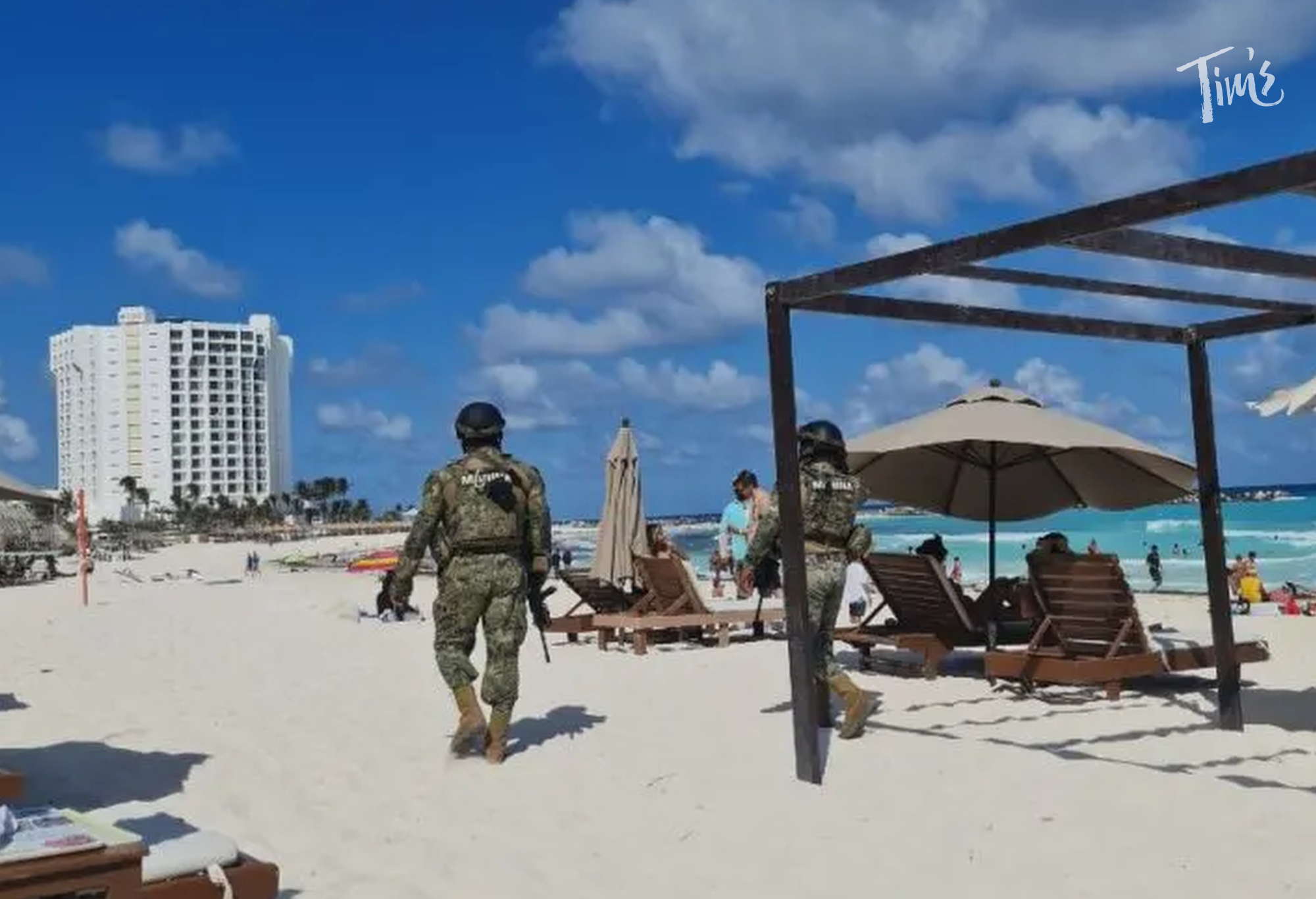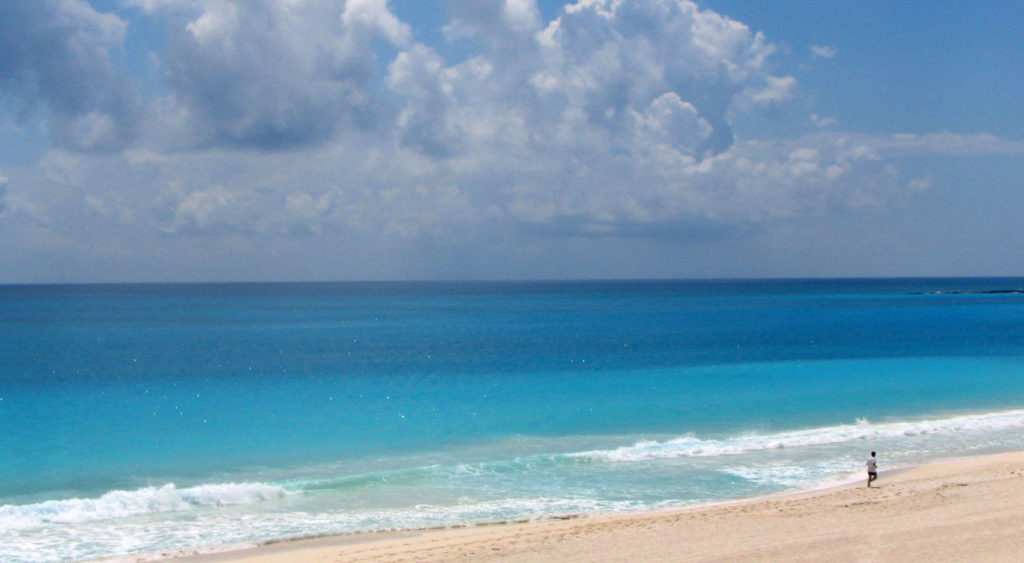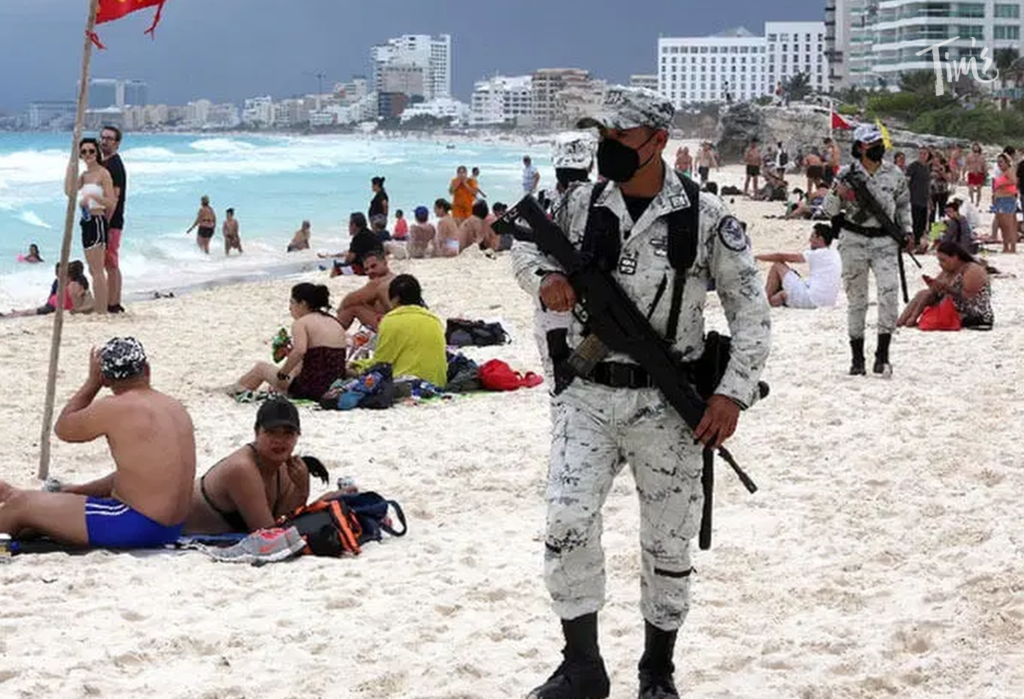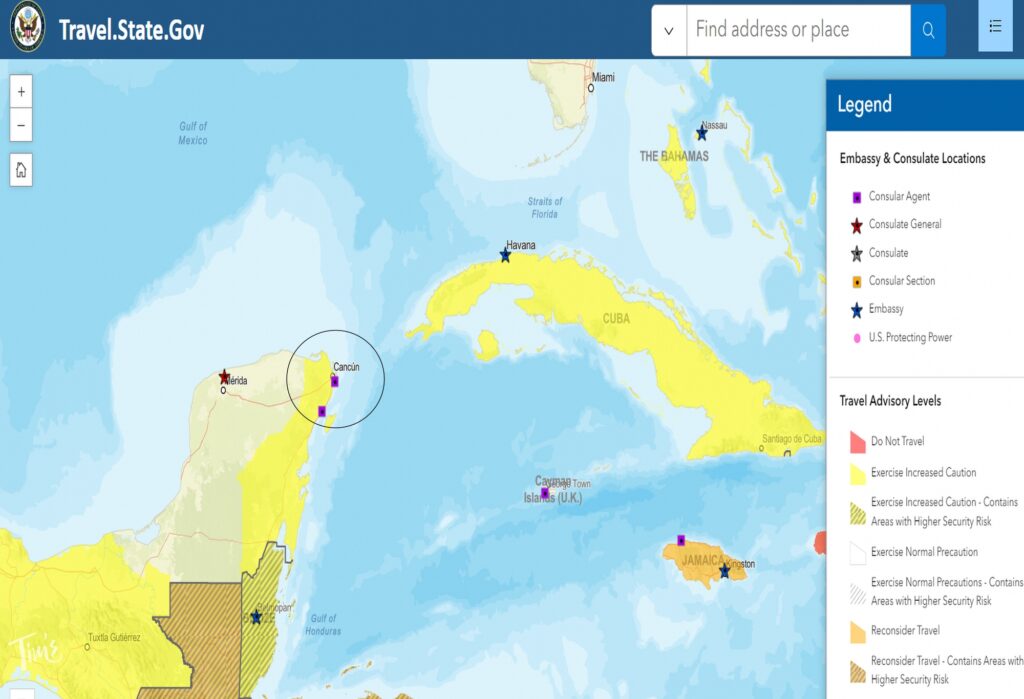
Cancun Travel Warnings
Living in Illinois, I still get excited each year when I see the first robin poking around in my yard. This is commonly known as our "first sign of spring". A classic study about robins cites that robins tend to fly north when the average temperature is about 36º Fahrenheit.
However now, after twenty years of renting Cancun vacation rentals I believe the first “sign of spring” is when the United States state department reminds travelers and the news media of how dangerous it is to travel in Mexico for spring break.
This happens every year at the same time.
2023 “U.S. Embassy issues Mexico Travel warning to spring breakers” – Washington Post March 16, 2023
2022 “Mexico Crime Wave Brings warning for spring breakers” – NEWSNATION March 17, 2022
2021 “Spring Break 2021 falling victim to COVID pandemic” – AL.com March 8, 2021
2020 “Are Miami and Cancun Safe?” – The US Sun March 23, 2020
2019 “US State Department issues spring break travel warning for Mexico” – New York Post March 8, 2019
2018 "State Department warns of dangerous Mexico Spring Break destinations" – Connecticut Post March 14, 2018
U.S. Embassy Issues a Message not a Travel Advisory
As Spring Break approaches, warnings emerge about Mexican vacation spots. A recent U.S. Embassy message for U.S. citizens, dated Monday February 26, 2024, reminds travelers to travel smart and be informed.
Nothing has changed in Mexico.
However, the U.S. Department of State must annually warn Americans how dangerous traveling to Mexico is. The original Travel Advisory from August 2017, is still in place. Even then it did not change the level for Quintana Roo, the state where Cancun is located. The Mexico Travel Advisory was reissued on August 22, 2023, after periodic review and the removal of obsolete COVID 19 page links.
It is true that Mexico is currently struggling with many issues including a drug war, and that some locations in Mexico are dangerous. The medias fixation on only these areas is exactly how the media misrepresents Mexico and this situation. This focus often portrays Mexico as much worse off than it is.
What does the State Department Update Mean for Travel?
In January of 2018, the U.S. State Department unveiled a new Travel Advisory Format for imparting global security information. The streamlined system is designed to avoid some of the old confusion about “Travel Warnings” versus “Travel Alerts.”
“This is the biggest overhaul in a very long time,” said Michelle Bernier-Toth in a January 10 conference call with the media. Bernier-Toth is acting deputy assistant secretary for overseas citizens services for the Bureau of Consular Affairs.
The new system assigns every country in the world a ranking on a four-level Travel Advisory scale. They range from Level 1, “Exercise Normal Precautions” to Level 4, “Do Not Travel.”
Mexico received a “Level 2” designation, which advises travelers to “Exercise Increased Caution: Be aware of heightened risks to safety and security.” That’s the same ranking as other popular travel destinations for U.S. citizens, such as the U.K., France, and Italy. Level 1 and Level 2 alerts are examined and then updated at least once per year.
The new Travel Advisories provide separate ratings for specific areas within a country. That’s where things get a little dicey for individual Mexican states.
“The differences regarding the states relate to U.S. government personnel in Mexico. We wanted to make sure that the U.S. traveling public is aware of all restrictions that we impose upon ourselves in Mexico,” said Bernier-Toth. "It’s more clearly spelled out now."
On a state-by-state basis, popular spots such as Cancun, Playa del Carmen, the Riviera Maya, Tulum, Los Cabos, and Mexico City maintain a “Level 2” designation.
In August 2017, they were singled out in an updated travel warning for Mexico. The first time-ever mention was prompted by an increase in drug-related violence.
The newest advisory does note that “turf battles between criminal groups have resulted in violent crime in areas frequented by U.S. citizens. Bystanders have been injured or killed in shooting incidents.”
Still, at “Level 2,” Mexico’s top destinations fare better than some of their counterparts. - Travel Agent Central Ana Figueroa January 16, 2018.
What are the State Department Travel Advisory Levels?
Level 1 - Exercise Normal Precautions. This is the lowest advisory level for safety and security risk. There is some risk in any international travel. Conditions in other countries may differ from those in the United States and may change at any time.
Level 2 - Exercise Increased Caution. Be aware of heightened risks to safety and security. The Department of State provides more advice for travelers to these areas in the Travel Advisory. Conditions in any country may change at any time.
Level 3 - Reconsider Travel. Reconsider travel due to serious risks to safety and security. The Department of State provides additional advice for travelers in these areas in the Travel Advisory. Conditions in any country may change at any time.
Level 4 – Do Not Travel. This is the highest advisory level due to the greater likelihood of life-threatening risks. The U.S. government may have very limited ability to provide assistance, including during an emergency. The Department of State advises that U.S. citizens not travel to the country or to leave as soon as it is safe to do so. We advise that you write a will prior to traveling and leave DNA samples in case of worst-case scenarios. See Travel to High-Risk Areas.
Varying Levels: We issue an overall Travel Advisory level for a country. However, levels of advice may vary for specific locations or areas within a country. For instance, we may advise U.S. citizens to "Exercise increased caution" (Level 2) in a country, while also advising them to "Reconsider travel" (Level 3) to an area within the country.
Risk Indicators
Advisories at Levels 2-4 include one or more established risk indicators and give specific advice to U.S. citizens who choose to travel there. These are:
C – Crime: Widespread violent or organized crime is present in areas of the country. Local law enforcement may have limited ability to respond to serious crimes.
T – Terrorism: Terrorist attacks have occurred and/or specific threats against civilians, groups, or other targets may exist.
U – Civil Unrest: Political, economic, religious, and/or ethnic instability exists. It may cause violence, major disruptions, and/or safety risks.
H – Health: Health risks, including current disease outbreaks or a crisis that disrupts a country’s medical infrastructure, are present. The issuance of a Centers for Disease Control Travel Notice may also be a factor.
N - Natural Disaster: A natural disaster, or its aftermath, poses danger.
E - Time-limited Event: Short-term events, such as elections, sporting events, or other incidents that may pose safety risks.
K – Kidnapping or Hostage Taking: Criminal or terrorist individuals or groups have threatened to and/or have seized or detained and threatened to kill, injure, or continue to detain individuals in order to compel a third party (including a governmental organization) to do or abstain from doing something as a condition of release.
D – Wrongful Detention: The risk of wrongful detention of U.S. nationals exists.
O – Other: There are potential risks not covered by previous risk indicators. Read the country’s Travel Advisory for details.
Interactive Map
An interactive map is on each country page. Click "View Larger Map" on the page. You can also go to travelmaps.state.gov to see countries color-coded by Travel Advisory level. More and less severe travel advice levels may apply to different areas within a country. Stripes indicate you should read the whole Travel Advisory for details.
Currently the U.S. rates travel to Cancun Mexico similarly to the United Kingdom, France, and Germany. Certain areas of Mexico pose higher risks, not the entire country.
Even the United States is at a travel advisory level between 1 and 2
Most the United States Travel Advisories are at Level 1 – Exercise Normal Precautions – or Level 2 – Exercise Increased Caution.
Homicides in the U.S.
Ranking 7th - St. Louis, Missouri in the United States was the city with the highest homicide rate in the world outside Mexico. The city is struggling with high poverty rates and drug-related crimes. In terms of violent crimes, Memphis, Tennessee recorded the highest rate in 2020, with St. Louis in third.
Baltimore came in behind St. Louis at 17th place.
Overal Crime Rate
Overall crime rate is calculated by dividing the total number of reported crimes of any kind by the total population, then multiplying the result by 100,000 (because crime rate is typically reported as X number of crimes per 100,000 people). Crime rates vary greatly from country to country and are influenced by many factors. For example, high poverty levels and unemployment tend to inflate a country's crime rate. Conversely, strict police enforcement and severe sentences tend to reduce crime rates. There is also a strong correlation between age and crime, with most crimes, especially violent crimes, being committed by those ages 20-30 years old.
Mexico 54.10 Crime Index per 100k.
The United States 49.2 Crime Index per 100k.



